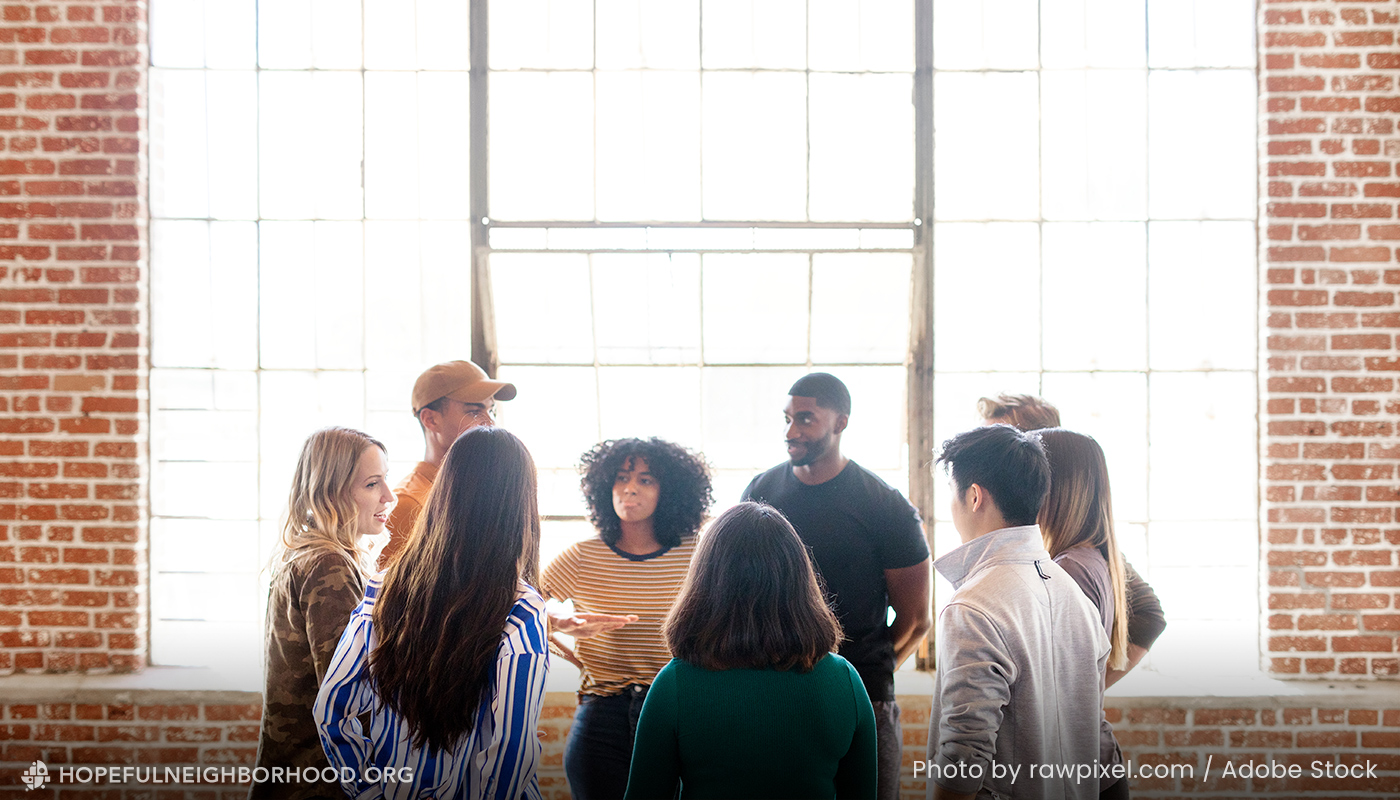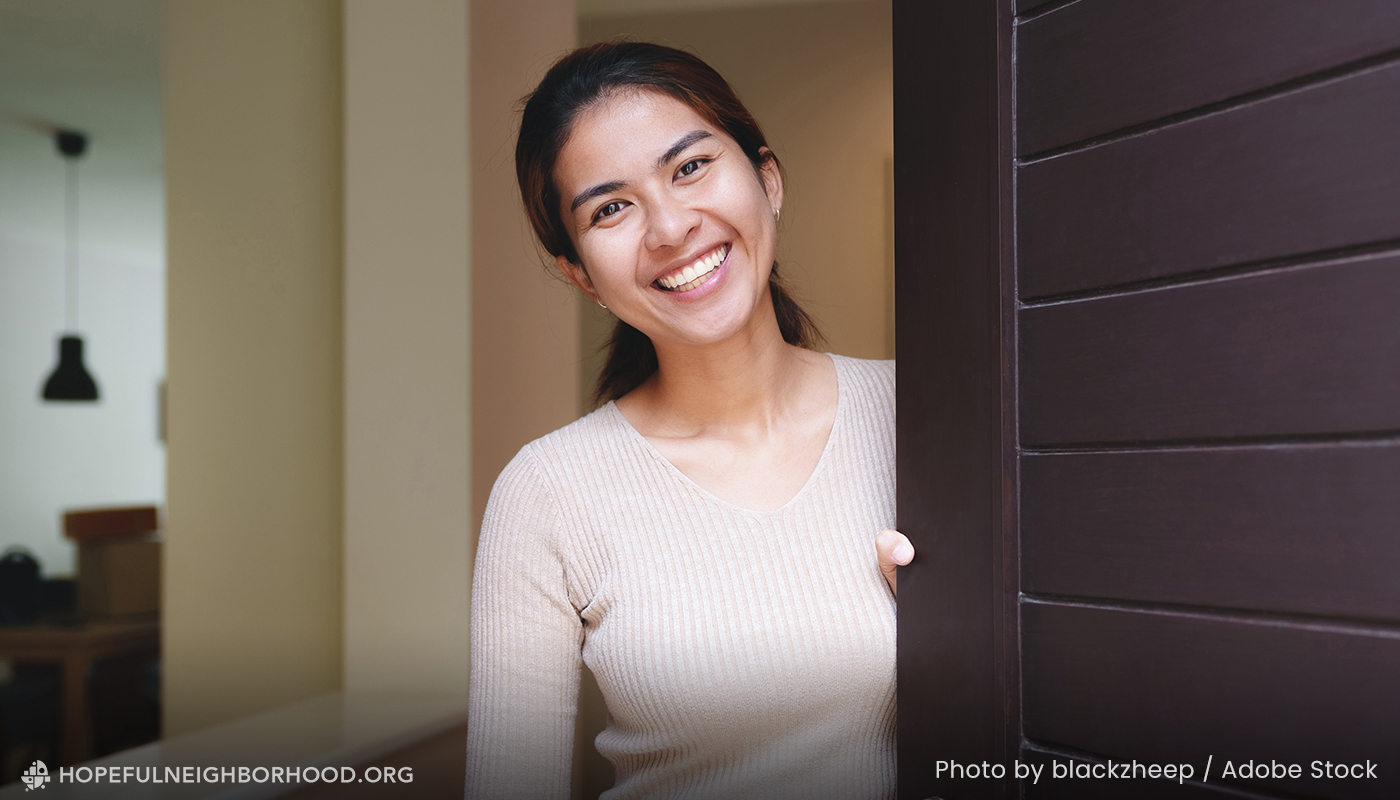Making friends as an adult can be awkward and getting to know your neighbors can be equally difficult. Over the years, I have been inspired by a few people and organizations that have shared thoughtful practices for being intentional in neighborhoods. Though I have lots of aspirations for connecting with neighbors, between work, kids’ activities, dinner, laundry, writing projects, Netflix, and exercise, sometimes my intentions do not match my aspirations. The truth is, if we want to build meaningful connections with our neighbors—we need more than friendliness or good intentions. We need intentionality.
In this post, you can find a few of those practical ways for getting to know your neighbors. These strategies are not exhaustive, but they can be great starting points for moving beyond aspirations or awkwardness to connection and community.
1. Keep the Light On
A colleague once described a great summertime practice in his neighborhood. If one family has their patio lights on, then it signals an open invitation for others to come and use their space or to join them. All they have to do is step out of the back door to know if others are available and interested in making an impromptu connection. What sign could be universally understood in your neighborhood as an invitation to connect?
2. Pause, Pivot, then Proceed
I met a couple who were thrilled to begin hosting weekly potlucks in their neighborhood. The original idea was for people to prepare and bring a dish to share. After they learned more about their neighbors, they realized their ideas of hospitality were different from their neighbors’ ideas. The idea of preparing a dish to share, in their minds, was a great way to connect. But their neighbors were hesitant to eat food that came from unregulated kitchens. They were concerned the hygiene may not have met their standards. Do they allow pets on the countertops? Do they double dip while preparing the dish? How well do they wash their dishes? In other words, the couple had great intentions, but it did not make the desired impact.
Instead of growing frustrated that their neighbors did not share the same enthusiasm for home-prepared food, they paused, pivoted, and then proceeded! They continued the potlucks, but instead of preparing food in their kitchens, they shared store-bought dishes that were pre-sealed so that neighbors could receive the gift of a shared meal without concerns about kitchen hygiene. They learned an important lesson about what it means to exist in community with people who have differing values. Even when we want the same outcome (community and connection), the process is just as important. Had they not taken the risk to start the potlucks, they may not have learned how to express interest in knowing their neighbors in meaningful ways. Can you identify an opportunity to pause, pivot, and proceed in your own neighboring efforts?
3. Build a Block Map
A dear friend has a sheet of paper inside her kitchen cupboard that includes a neighborhood map with the surrounding blocks of her street. The sheet includes each house and the residents’ names, birthdays, favorite candies, and other details. She uses the information to remember tidbits that her neighbors share with her. It has been a meaningful way to build connections with them over the years.
An organization called the Art of Neighboring shares a similar resource in their block map. The block map helps you map out your most immediate neighbors. Your map can take any form that it needs to, and you can include the information that is most important in your community. Some generations may think of this strategy as a rolodex of sorts. How might you create a system for recording the insights that your neighbors freely share about themselves as a way to express care and build connection?
4. The 8 Front Doors Challenge
The Neighboring Movement invites people to participate in the 8 Front Doors Challenge as a way to get to know their neighbors better. You can take part in this activity whether you live in an apartment, condo, townhome, farm, trailer park, senior community, or even a college residence hall! Download the PDF and follow the steps to complete the challenge. Consider inviting others in your neighborhood or another sphere of your life to complete the challenge with you so you have someone else to process the experience with.
5. Gifts Hidden in Plain Sight
In the hustle and bustle of life, it can be easy to miss the ways that neighborhoods are treasure troves of people. The Hopeful Neighbor Project offers free Neighborhood Journals as a part of their Getting Started Kit. The journal allows you to identify gifts in your neighborhood. Especially the ways that the people in your community make it better.
For example, in our community, our neighbors support our children’s summer job efforts by allowing them to wash their dogs for pay. I got to know another neighbor when we planned a community BBQ (with food that was prepackaged or prepared on-site). More than 25 neighbors came to the event — including one couple who had moved in less than a month prior. As a young adult, I learned to knit from a neighbor in her 90s. Had we not slowed down long enough, we may have missed the beauty and the needs within our community. What gifts in your community may be hidden in plain sight?
Develop self-awareness, take risks, respect boundaries, and stay curious.
Leah Fulton
Before you delve into these strategies, I encourage you to heed a few guiding principles — develop self-awareness, take risks, respect boundaries, and stay curious. You can read about each of those ideas in my October 2024 blog post for The Hopeful Neighborhood Project. What other ideas do you have for pursuing connection and community by getting to know your neighbors? Leave them in the comments below, and happy neighboring!



0 Comments